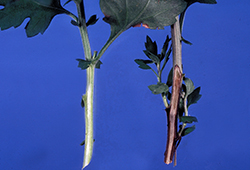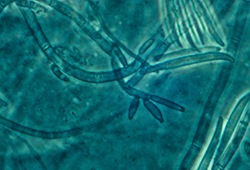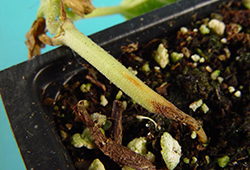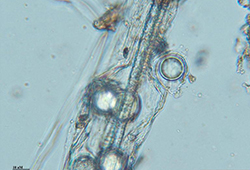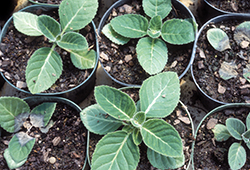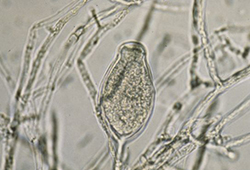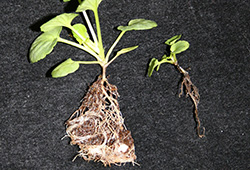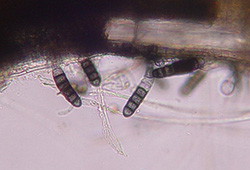Root rots: Can you tell the difference?
Root rots can cause similar symptoms on hosts. Here are some tips for scouting in your greenhouse.
Greenhouse growers scouting their crops may come upon damping off symptoms in a plug tray or finished plant material that is wilted despite being watered. Michigan State University Extension suggests growers remove the plant from its container and inspect the roots. Are they white and healthy? Do you know what healthy roots look like for each plant species?
Growers often desire an instant answer and would like to distinguish between root rot diseases immediately. Fusarium, Phytophthora, Pythium and Thielaviopsis are the most common soil-borne pathogens that infect bedding plants. Below is a listing of the disease and disease type, characteristics of that disease and photos of disease symptoms on a host and of reproductive structures. Can you tell the differences between these pathogens?
Common root rot diseases of bedding plants and their symptoms. | |||
|---|---|---|---|
|
Disease |
Characteristics |
Plant disease photos |
Microscopic view of pathogen |
|
Fusarium spp. |
Stunting, yellowing, wilting, vascular system dark discoloration |
Fusarium on chrysanthemum. Credit: Department of Plant Pathology, North Carolina State University, Bugwood.org |
Fusarium root rot. Credit: Gerald Holmes, California Polytechnic State University at San Luis Obispo, Bugwood.org |
|
Pythium root rot |
Rotting of roots, slow growth, stunting, chlorotic foliage |
Pythium on seedling. Credit: Gerald Holmes, California Polytechnic State University at San Luis Obispo, Bugwood.org |
Reproductive spore of Pythium. Credit: Elizabeth Bush, Virginia Polytechnic Institute and State University, Bugwood.org |
|
Phytophthora spp. |
Root and stem rot, stunting discoloration and wilting |
Phytophthora spp. on gloxinia. Credit: Department of Plant Pathology, North Carolina State University, Bugwood.org |
Phytophthora cinnamomi asexual spore. Credit: Mary Ann Hansen, Virginia Polytechnic Institute and State University, Bugwood.org. |
|
Thielaviopsis basicola |
Chlorosis, stunting wilting, black lesions on roots, dieback |
Stunting and root rot of pansy due to Thielaviopsis (right). Credit: Jan Byrne, MSU Diagnostic Services. |
Characteristic spores due to Thielaviopsis. Credit: Jan Byrne, MSU Diagnostic Services. |
You will notice these root rot diseases have many very similar symptoms such as chlorosis, stunting and wilting. Because of these similarities, we always recommend growers send a sample of a plant with a suspected root rot pathogen to a diagnostics lab such as MSU Diagnostic Services for accurate identification. Plant diagnosticians will observe your sample under the microscope and often culture it on media to isolate and identify the pathogen. Growers will benefit from knowing which root rot they have in order to develop an effective disease management plan.



 Print
Print Email
Email